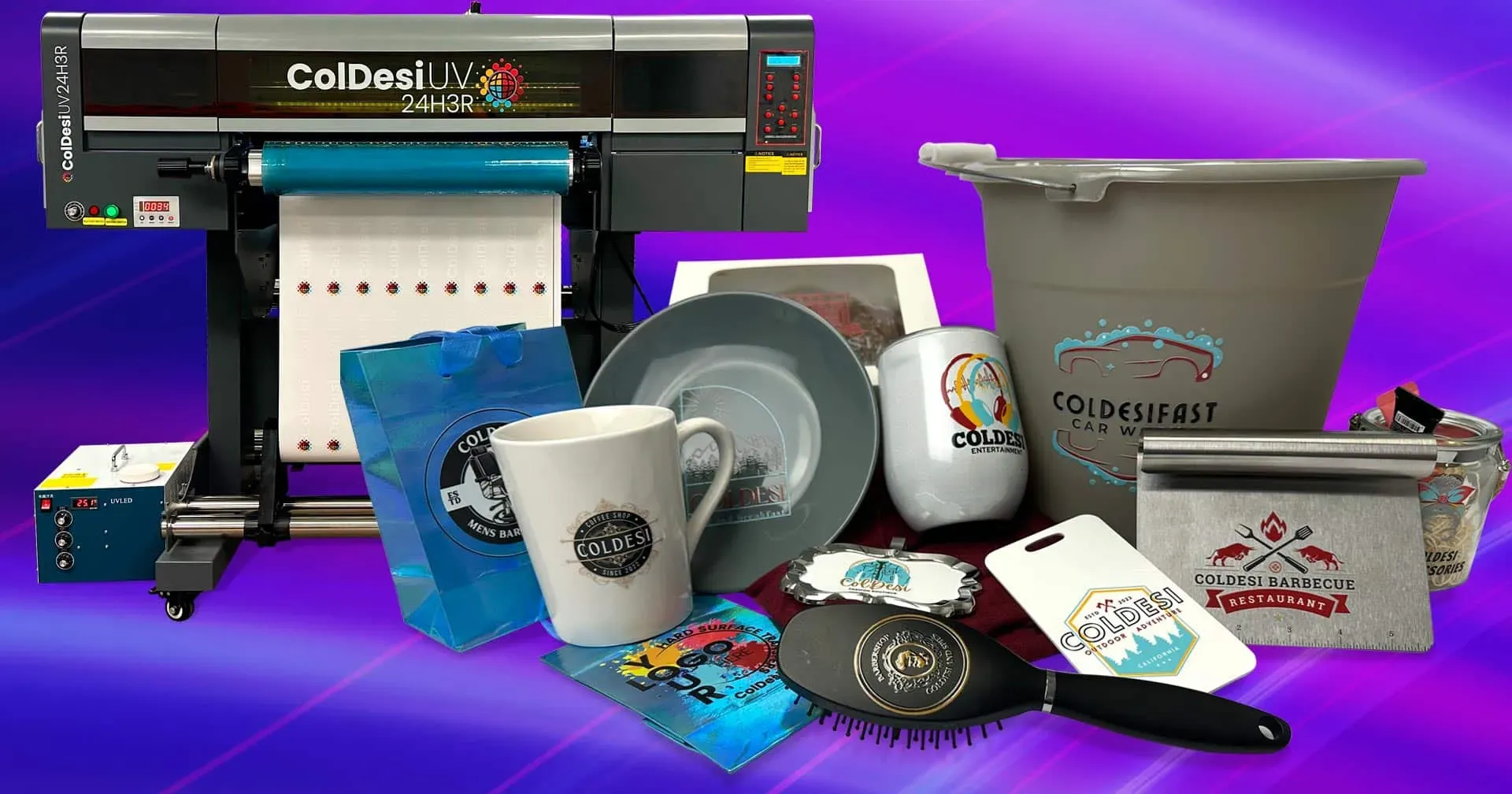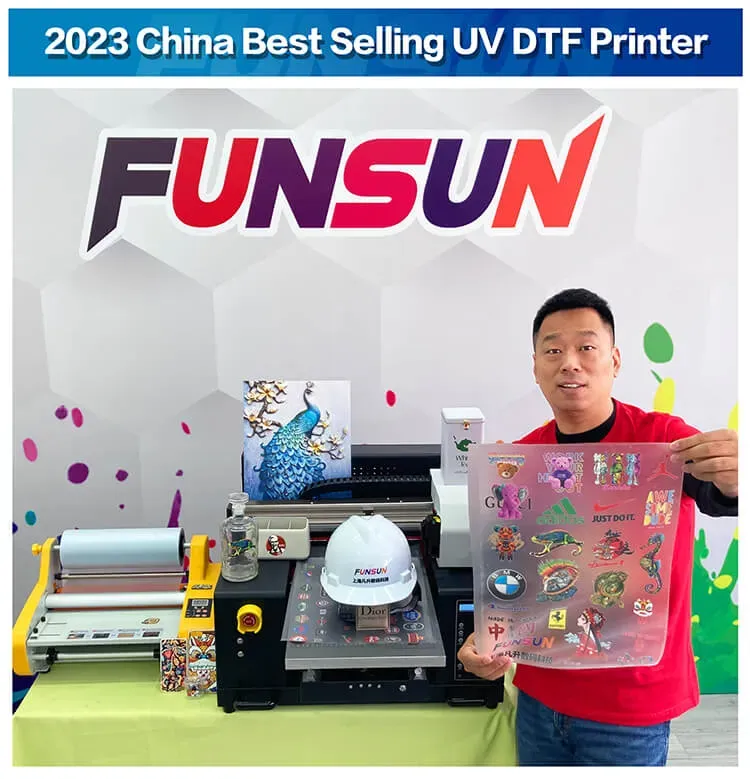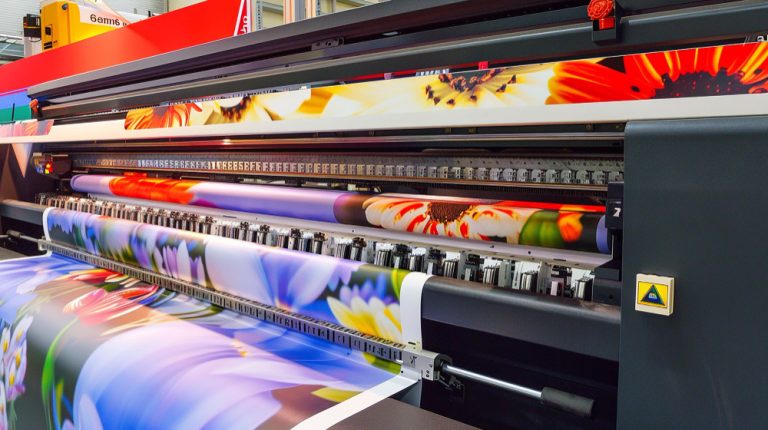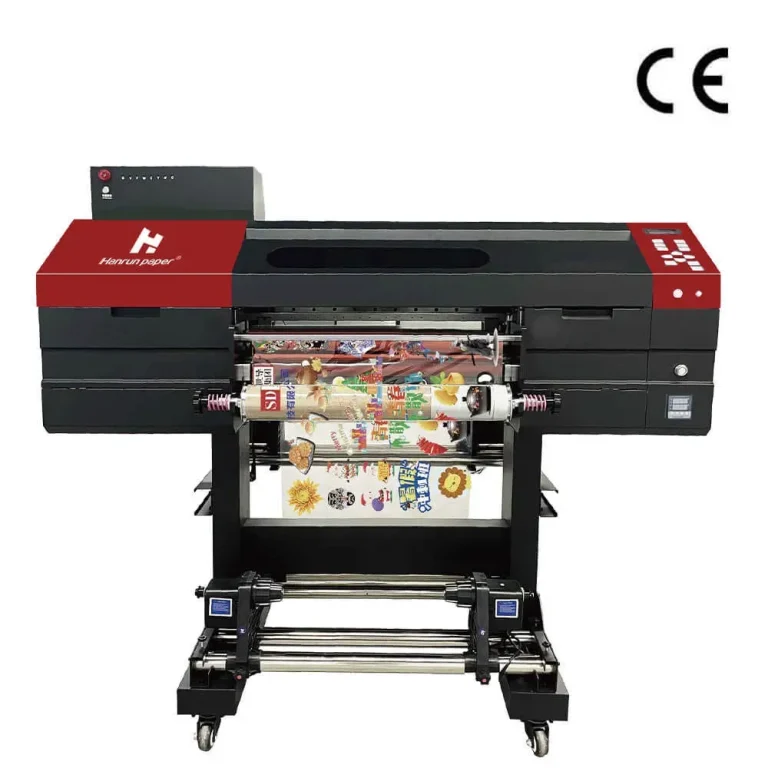UV DTF printing has revolutionized the way we approach custom design and branding, standing out as a remarkable technology in today’s digital printing landscape. Unlike traditional printing methods such as screen printing and dye-sublimation, which often come with specific material constraints, UV DTF printing utilizes UV-curable inks to create stunning visuals on a wide range of substrates, from fabric to hard surfaces like wood and glass. This innovative process not only enhances color vibrancy but also ensures superior detail, making it a favored option for businesses looking to elevate their branding. Additionally, the cost-effectiveness of printing with UV DTF shines through, particularly for smaller batches where traditional methods can be less viable. As sustainability becomes an essential consideration in production, UV DTF technology also offers a more environmentally friendly alternative, producing fewer volatile organic compounds and contributing to a greener printing industry.
Exploring the realm of UV Direct-to-Film (DTF) printing unveils a cutting-edge approach to print technology that caters to diverse needs and preferences. Commonly associated with advanced digital printing solutions, this method allows for the application of UV inks on various surfaces, presenting an excellent option for personalized and high-resolution projects. Furthermore, when compared to classic techniques such as screen printing and dye-sublimation, UV DTF is acclaimed for its remarkable adaptability and reduced environmental impact. The integration of such innovative printing methods underscores a growing trend toward sustainable printing practices and customizable designs in today’s business landscape. By considering alternatives to traditional methods, enterprises can unlock new possibilities in their printing endeavors.
Advantages of UV DTF Printing
UV DTF printing has emerged as a frontrunner in modern printing technology due to its distinct advantages over traditional methods. One major benefit is its exceptional print quality, which allows for sharp and vibrant colors that can captivate any audience. The UV inks cure instantly, enabling intricate details and designs to be produced on a variety of substrates, including hard surfaces. This capability not only enhances branding opportunities but also positions UV DTF as a go-to option for artists and businesses aiming for high-quality outputs.
Another significant advantage of UV DTF is its speed and efficiency in production. Compared to traditional printing methods, which often require lengthy setup times, UV DTF can quickly complete small batches or customized orders. This is particularly beneficial for businesses that thrive on quick turnaround times, such as promotional companies and custom merchandise retailers. With the ability to print directly onto various materials without the need for complicated setups, UV DTF printing streamlines the production process, which can lead to increased profits.
Traditional Printing Methods: A Closer Look
When discussing printing technologies, traditional methods such as screen printing and dye-sublimation have been long-standing choices for businesses. Screen printing is particularly favored for bulk projects due to its cost-effectiveness, allowing for lower prices per unit when printing large quantities. This method excels in producing bold and vibrant colors on an array of fabrics, making it the industry standard for t-shirts and promotional items.
However, there are limitations to traditional printing techniques. For instance, dye-sublimation requires specific fabric types to achieve optimal results, thus narrowing its application. While traditional printing remains viable for large runs, it often lacks the versatility and speed that modern businesses demand today. The clear distinction in capabilities between UV DTF printing and traditional methods highlights a shift in industry preferences towards more adaptable solutions.
Cost-Effectiveness in Printing
Cost-effectiveness is a pivotal aspect of selecting a printing method, and it varies significantly between UV DTF and traditional techniques. Traditional methods like screen printing may present lower costs per unit when producing large quantities, making them appealing for bulk orders. Yet, smaller businesses or those looking to produce customized items may find that UV DTF provides an economically viable solution despite higher initial costs. The long-term savings resulting from reduced setup times and waste can outweigh upfront expenditures.
Additionally, with modern digital technology, businesses are increasingly moving towards personalized marketing efforts, which can incur higher expenses using traditional printing methods. UV DTF printing’s efficiency in handling small runs without additional costs makes it an attractive alternative. This adaptability not only supports cost management but also meets the growing demand for customization in an ever-changing market.
Material Versatility in UV DTF Printing
One of the standout features of UV DTF printing is its astonishing versatility in printing on various substrates. Unlike traditional methods that may be limited to specific materials, UV DTF can effectively print on hard surfaces like glass, metals, and plastics. This opens up an array of possibilities for product customization, catering to businesses in signage, promotional products, and even home décor.
In contrast, many traditional techniques, such as dye-sublimation, are primarily restricted to polyester fabrics, thus limiting their usage. The ability of UV DTF to adapt to so many different substrates not only increases its appeal but also allows practitioners to cater to a diverse clientele, ensuring that various demands can be met. This versatility is particularly advantageous in a market that continuously seeks innovative solutions.
Sustainability and Environmental Impact of Printing
In recent years, the emphasis on sustainability within the printing industry has become paramount. UV DTF printing utilizes UV-curable inks, which significantly reduce the emission of volatile organic compounds (VOCs) compared to many traditional methods. The implementation of these environmentally friendly inks underscores a commitment to sustainable printing practices, ensuring that businesses can promote their products without compromising ecological integrity.
Conversely, traditional printing methods often rely on solvent-based inks, which can contribute to environmental pollution. As businesses increasingly seek sustainable practices, the adoption of UV DTF technology could represent a significant shift towards greener production techniques. By investing in methods that prioritize sustainability, companies not only enhance their marketability but also align with the growing consumer demand for eco-friendly products.
Future Trends in Printing Technologies
As the printing industry evolves, the integration of digital technologies and hybrid printing solutions becomes more apparent, paving the way for innovations like UV DTF printing. Experts predict that this method will continue to gain popularity as businesses recognize the flexibility and efficiency it offers. The trend towards on-demand printing and customized solutions aligns seamlessly with the capabilities of UV DTF, suggesting a brighter future for this technology in a competitive landscape.
Moreover, advancements in printing technology are rapidly altering the future of the industry. Experts believe that merging traditional techniques with digital innovations could lead to even greater efficiencies and possibilities, ensuring businesses can remain competitive. As companies and consumers continue to evolve, the expectations for quality, speed, and sustainability in printing will undoubtedly influence the adoption of UV DTF printing over its traditional counterparts.
Frequently Asked Questions
What is UV DTF printing and how does it differ from traditional printing methods?
UV DTF printing stands for UV Direct-to-Film printing, a modern printing technology that utilizes UV-curable inks applied onto a transfer film. This method offers vibrant colors and the ability to print on various substrates, unlike traditional printing methods such as screen printing and dye-sublimation, which have more specific applications and limitations.
Is UV DTF printing as cost-effective as traditional printing methods?
While UV DTF printing can require a higher initial investment, it proves cost-effective for small batches due to its fast production capabilities. Traditional methods like screen printing are cheaper for large orders but may not be practical for smaller runs, making UV DTF a more economical choice for personalized printing needs.
How does the print quality of UV DTF printing compare to screen printing?
UV DTF printing typically surpasses screen printing in quality thanks to its ability to produce sharper images and vibrant colors. Traditional screen printing may struggle with fine details, especially on smaller orders, whereas UV DTF maintains color integrity across diverse materials.
Can UV DTF printing be considered a sustainable printing option?
Yes, UV DTF printing is considered more sustainable than many traditional printing methods. It employs eco-friendly UV inks that emit fewer volatile organic compounds (VOCs) compared to solvent-based inks used in traditional printing, thus reducing its environmental impact.
What materials can be printed using UV DTF printing as opposed to dye-sublimation?
UV DTF printing boasts greater versatility, allowing for printing on a wide range of materials including plastics, metals, and glass. In contrast, dye-sublimation is limited primarily to polyester fabrics, making UV DTF a more flexible choice for diverse projects.
What trends are emerging in UV DTF printing compared to traditional printing methods?
Current trends indicate a shift toward integrating digital technologies in printing, enhancing efficiency and customization. UV DTF printing is gaining popularity as businesses seek quicker turnaround times and the flexibility to print on various substrates, positioning it strongly against traditional printing methods.
| Aspect | UV DTF Printing | Traditional Printing Methods |
|---|---|---|
| Print Quality | Excels with superior detail and vibrant colors | Typically lower detail in smaller batches; various methods may impact quality |
| Speed and Efficiency | Rapid production suitable for on-demand printing | Setup time may not justify costs for smaller runs; slower |
| Cost-Effectiveness | Higher initial investment, but long-term savings for small batches | Lower costs for bulk printing; less practical for small orders |
| Versatility | Can print on various materials, including hard surfaces | Limited to specific materials like polyester fabrics |
| Environmental Impact | Uses eco-friendly inks with fewer VOCs | Traditional inks can have a higher environmental footprint |
| Future Trends | Growing market position with flexibility and adaptability | Continuing relevance but less focus on modern integration |
Summary
UV DTF printing is a modern and innovative printing method that caters to a wide range of applications and needs. It stands out for its high-quality output, versatility on various substrates, and environmentally friendly practices. While traditional printing methods have their own benefits, such as lower costs for large-scale productions, the ability of UV DTF to deliver on speed and detail makes it the preferable choice for businesses that require efficiency and quality. As printing technology evolves, UV DTF printing is likely to continue gaining prominence, shaping the future of custom and on-demand printing solutions.







